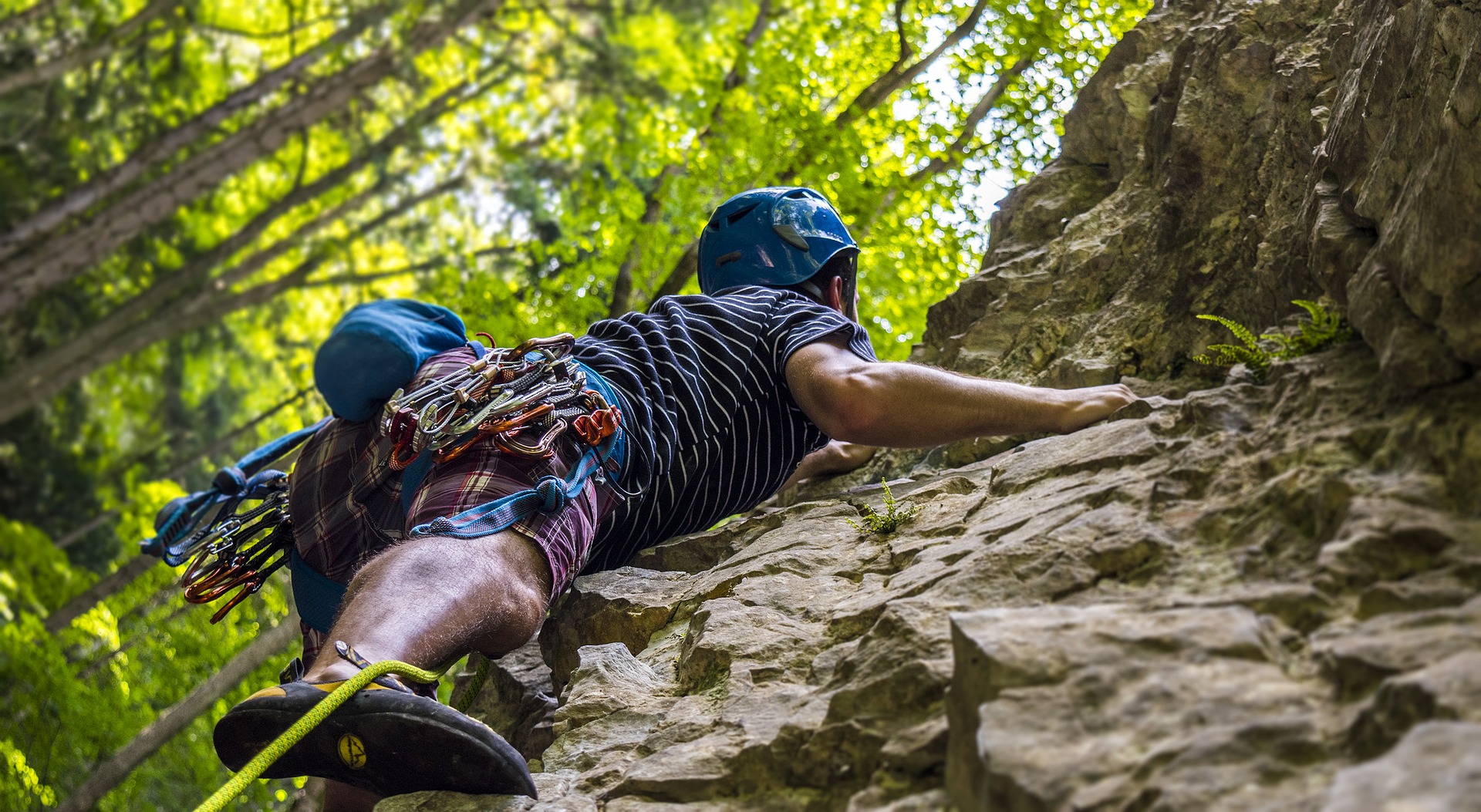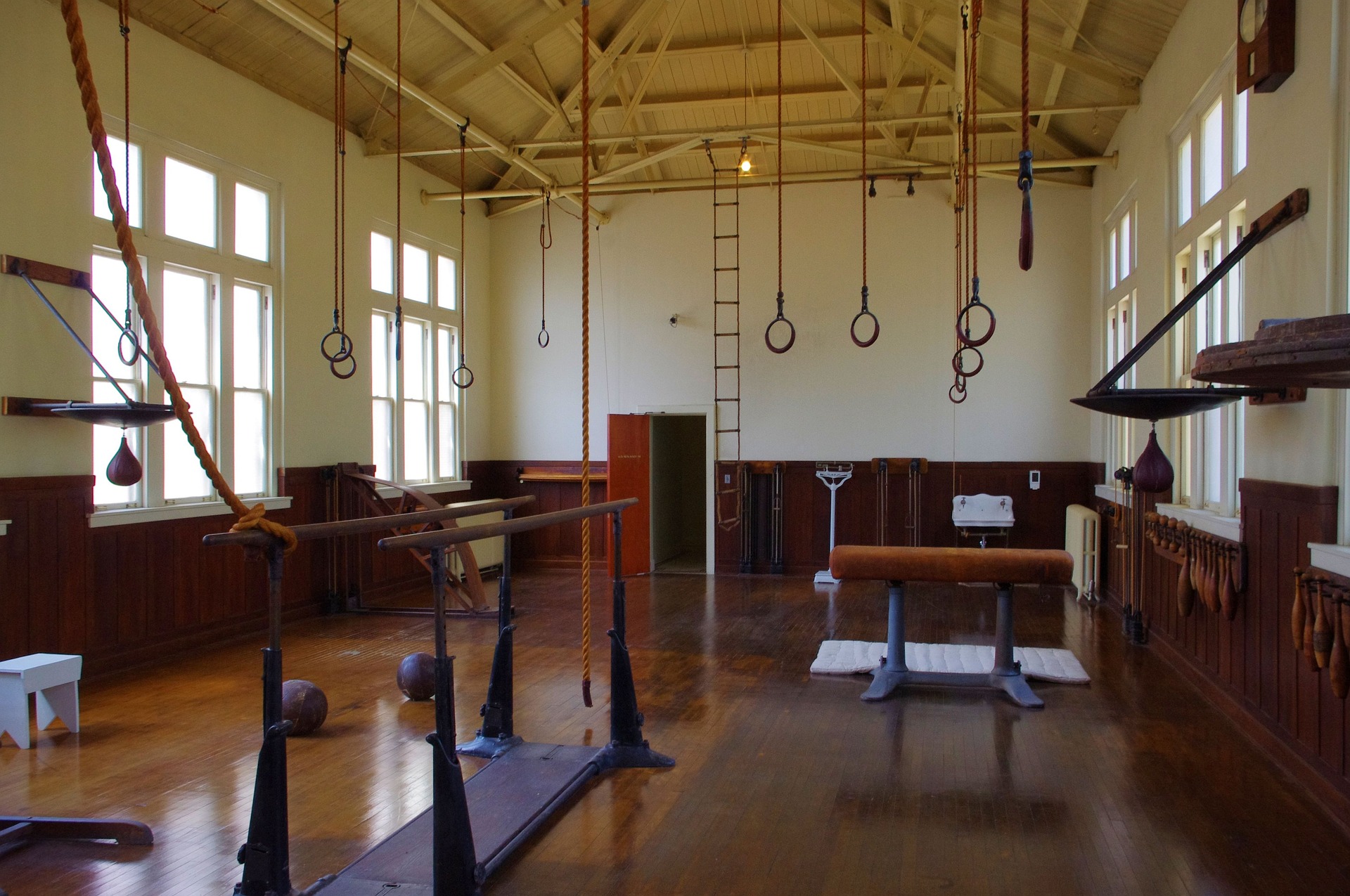
If you are even slightly serious about getting better at rock climbing, you’re going to have to start some form of training program. But what should you do?
There are a lot of approaches to training, be it climbing or any sport. Some people advocate just climbing more, while others suggest a lot of specific strength training off the wall. The confusing thing is that both are right.
A new climber will benefit from the skill building that will come from more climbing while at the same time it will offer enough load for the body to get stronger.
On the other hand, an experienced rock climber knows how to move well and is just limited by not being strong enough for their project, so they will see more progress with weights and finger strengthening on a hangboard.
To get better, there are some fundamentals you will have to understand.
Progressive Overload – To get stronger or fitter, you will have to increase the demand as the body adapts. This can be adding weight, reps, volume, or find harder exercise variations.
SAID Principle – Specific Adaptations to Imposed Demands. This means you will get better at things you do regularly but your body will stop progressing as quickly as it gets more efficient. If you want to be a better climber then you have to both climb and do things that make you stronger at climbing.
Individualization – Don’t just follow some famous climbers program. You need to take into account your current fitness, training experience, and your lifestyle out of the gym when it comes to formulating your own training program.
Variation – Our bodies are lazy. They will only do the bare minimum necessary for survival, so you will find that you quickly adapt to training which leads to stagnation. While our bodies might be lazy, they are also kind of dumb so you just need to create some variation in your training to fool your body into further progress.
When it comes to training, consistency is key. Even a less than optimum program followed regularly will see pretty impressive results. Training progress is measured in months and years, so sticking with it is one of the most important things you can do.
The flip side of the coin is that all the training in the world won’t do you any good if you can’t recover from it. Think of it as an equation. Training + Recovery = Progress. This is where days off, good nutrition, and enough sleep will come in.
Our goal with this article is to bring your some ideas you night not have seen and some tips on integrating them into your training.
Density Training

This is one of my favorite training techniques, as it is versatile and works well with my short attention span. The idea is to get as much work done in a set amount of time as possible.
This can mean setting a timer and getting as many reps in as possible in that time, or setting an interval timer and doing a set when ever the timer beeps. You can download an interval timer for your phone and set the work and rest intervals.
For ‘Every Minute On The Minute Workouts’ (EMOM), I will set it for 5 intervals which means 5 work and rest intervals for a total of 10 sets. This might sound complicated, but just do a set whenever it beeps.
The great thing with this type of workout is you get a lot of work in during a short amount of time. I’ve done workouts where I get 60 sets of work (a variety of exercises) done in 60 minutes. In addition to the strength and muscular endurance benefits, it also helps with general conditioning.
Another option is just setting a timer and getting as many reps in during a set amount of time as possible. The next time you do this workout, try to get more reps.
Here are a few ideas that I have used to great effect.
For Increasing Strength
Choose a weight that you can do 5-6 reps with. Then do 10 sets of 3 reps. Every minute on the minute do three reps. I have found strength goes up quickly for about 4 weeks if I do this twice a week per exercise. When setting up a workout plan, only pick one main and one supplementary exercise to do this. For example I will do weighted pull ups and weighted push ups.
All the other exercises in a workout are done with lighter weight for higher reps to save yourself from beating up the joints. You can still do them every minute on the minute to be time efficient.
Muscular Endurance
This can be great for building forearm and finder endurance for rock climbing. You just need a fingerboard or edge you can hang off of.
Set a timer for 10 second work and 5 second rest with 40 intervals. This will be 10 minutes of work. Now hang from a 20 mm lip or edge on a finger board. Your forearms will be torched by the end. For progression, you can add time to the overall workout, but stick to the 10 second work and 5 second rest ratio to keep the workload up and not overload the tendons.
Set a timer to beep every minute for 10 minutes.
Every minute do 3 reps. If you can do all 10 sets of 3 reps without failure, increase the resistance for the next workout.
Climbing Endurance
If you have your own wall or access to a climbing gym, you can make use of this technique as well. Make sure you are well warmed up before you start to reduce the risk of injury, as this will get difficult towards the end.
Pick 5 boulder problems that are hard but you can consistently finish. These shouldn’t be projects, just ones you can do but are some work. Think a grade or two below your limit.
Set your timer to beep every minute and do each problem 5 times. If they are long problems, limit yourself to 10 moves before you hop off and rest before your next repetition. With this workout, you will be doing 25 attempts in 25 minutes.
As you can see, timed sets or density training can force you to get a lot of work in in a short amount of time. This is very effective for building muscular endurance and overall body conditioning. Plus, the boost in mental toughness that comes from doing hard things is a nice bonus.
When doing these workouts, the first few sets are pretty easy. But due to the short rest periods, each set gets harder. When you get to the point where you can do all of the reps, find a way to make it harder. This could mean adding weight, adding a rep, or choosing an exercise variation that is harder.
This approach to training is different than the usual sets and reps, but gets great results and gets you focused because whenever the timer beeps, it’s time to go.
READ MORE: Popular Hikes In The Northwest
Ruck Marching

I know what you are thinking. How does hiking with a weighted pack improve my rock climbing?
It is pretty simple on two fronts. First, when you increase your aerobic fitness, you will improve you ability to do hard things. When you have more work capacity, you will improve your ability to do hard things over and over.
Secondly, many outdoor climbing trips involve an approach that requires you to hike relatively long distances on rough terrain. If you are spent before you even get to the climbing part, you aren’t going to climb very well.
Ruck marching is simply going on hikes with a weighted backpack. You can also use a weighted vest if you have one.
Start with 5-10 lb. in your pack, and every week or two increase the weight by 5 lbs. Once you are up to 50 or 60 lbs, focus on hillier terrain or on hiking faster. The goal is to increase conditioning and aerobic capacity without getting injured. If you go too heavy, you increase the risk of overuse injuries.
Aim to do this two to three times a week for 30-60 minutes. This will build your overall fitness and help in all aspects of your training, even if you are a boulder who only does 10 moves or less on a problem. The longer the routes you want to do, the longer the hikes you should build up to.
This will help you with recovery between hard efforts and those long approaches carrying your rock climbing gear or crash pads.
Rolling Bar Hangs
I came up with Rolling Bar Hangs a number of years ago as a way of training my grip while dealing with a tendon strain. It is just as is sounds, hanging from a bar that isn’t locked in place like the usual pull up bar.
The fact that it rolls is really taxing on your grip but easy on the tendons.
To make your own, you will need a metal bar or pipe that is 1.25-2 inches in diameter, a couple of short climbing slings, and a place to hang it. Make sure the pipe is strong enough to resist bending when you are hanging from the middle.
I hung the slings from bolts installed in the ceiling beams in my basement about 3 feet apart. Then just slide the pipe through the slings and you have a bar you can hang off of. You could also girth hitch the slings to a pullup bar and do it that way as well.
Once you’ve mounted your bar, treat it like a finger board. Short hangs with added weight to build strength. For example, 5 second all-out effort with 4-5 minute recovery between.
To build endurance, combine the rolling bar with the density workout above. With an interval timer on your phone, set it for 10 second work and 5 second rest. Start with a set of 8 repeats and build up to 40.
This is better than doing long hangs as the isometric engagement for longer periods can increase the risk of injury and doesn’t mimic the on and off nature of rock climbing where you get micro rests between moves.
Gymnastic Rings

When I say gymnastic rings, I’m talking about the actual training tool and the training techniques of the gymnasts who use them. Gymnastic rings offer so much more than just being a old school TRX.
They are versatile, portable, and scalable. I will often take them to the soccer field and combine walking lunges with ring work for the upper body. There are beginner, intermediate, and advanced versions of the movements — and that’s without even adding any extra weight.
Strong tendons and muscles in the arms, wrists, and shoulders are needed for rock climbing and they are all targeted while doing exercises on the rings.
I want to highlight turning out the hands when doing dips, push-ups, or muscle-ups. This is when, at the top of the rep, you turn your palms from facing your body to facing forward when you complete the rep. This little extra movement at the end will strengthen the bicep tendon.
This will help with your climbing and is needed if you ever want to progress to doing the iron cross on the rings.
Here is a list of movements you can do on the rings.
- Pull-ups
- Push-ups
- Muscle-ups
- Dips
- Body Rows
- L-Sits
- Front Levers
- Planche
- Ab Planks and Rollouts
READ MORE: Hiking Terms: 27 Words You Should Know
High Frequency Training
This is as it sounds. Instead of training only a few days a week, you hit things as often as every day. The key is to initially reduce the duration of workouts so your weekly volume workouts work out to be about the same. Then as you adapt, you can increase the volume and intensity of your sessions.
Studies have shown that athletes who do the same volume on a weekly basis but trained more frequently (up to 5 days a week) make more progress than the group that only trained two times per week. This is especially easy to do if you have the ability to train at home.
When you start it may be difficult to train again when you are sore, but the body is a wondrous thing and adapts very quickly.
High frequency training is something I will do for a few months and then do a few months on a more traditional program. It is a great way to add variation and progression to a program.
Conclusion
When it comes to training for rock climbing, you will go a long way by trying hard. But when that stops working, it’s time to develop a specific program. With the training principles and ideas in this article, hopefully it will give you some ideas on how to tweak your training to become stronger and fitter for rock climbing.
By Winston Endall
Pin it for later!
